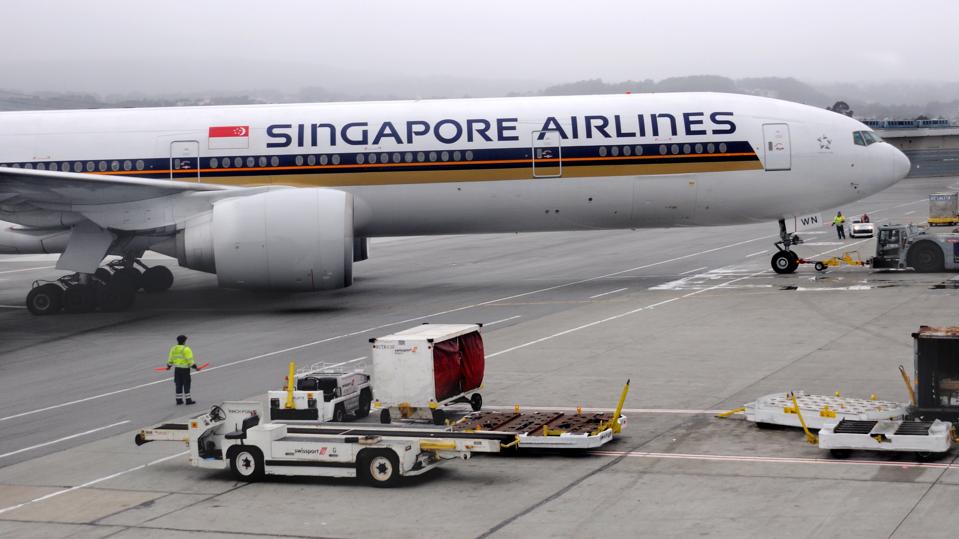A 73-year-old passenger died and several others were injured during a Singapore Airlines flight Tuesday after the plane encountered severe turbulence, an occurrence that has caused dozens of injuries over the last two decades, though officials and government data suggest fatalities are rare.

Flight attendants have accounted for most turbulence-related injuries in recent decades.
Getty Images
Key Takeaways
- The Singapore Airlines flight en route to Singapore from London’s Heathrow Airport experienced “severe turbulence” about 11 hours after taking off, resulting in “multiple injuries”—including 18 people who were hospitalised in Bangkok—and one death, the airline said.
- Flight data appears to show the flight dropping from an altitude of 37,000 feet to an altitude of about 31,000 feet over four minutes, though it’s not immediately clear what caused the plane to descend.
- 56 Australians were on board the flight.
- Turbulence—air movement during flights that often occurs unexpectedly—can result in injury because it can cause passengers to suddenly jolt forward, striking the seat in front of them, or cause them to be tossed upward if they’re not wearing a seatbelt.
- While severe turbulence can cause injury, they are a rare occurrence across the thousands of commercial flights taken each day because most passengers wear their seatbelts and pilots are trained to avoid serious cases of turbulence, according to a National Transportation Safety Board report, which said no turbulence-related deaths had been recorded on a commercial flight since 2009.
- Flight attendants accounted for most turbulence-related injuries between 2009 and 2018, the NTSB reported, because they’re more likely to not wear seatbelts during periods of turbulence as they assist passengers.
- Between 2009 and 2022, severe turbulence caused 163 serious injuries on commercial flights, while only 34 were reported among passengers, according to the Federal Aviation Administration.
Crucial Quote
Dafran Azmir, a passenger on the Singapore Airlines flight, told Reuters the aircraft started tilting up before “very suddenly there was a very dramatic drop, so everyone seated and not wearing a seatbelt was launched immediately into the ceiling.”
Big Number
78.9%. That’s the percentage of total turbulence-related injuries reported among flight attendants between 2009 and 2018, compared to just over 21% for passengers, according to the NTSB report. About one-third of all injuries reported on commercial flights during this period were caused by turbulence, the agency said.

Surprising Fact
A study published last year found incidents of severe turbulence increased 55% between 1979 and 2020 in the North Atlantic, suggesting climate change had increased wind strength. Researchers predicted turbulence will increase significantly worldwide between 2050 and 2080.
Key Background
Turbulence is often associated with heavy storms, though the most dangerous form of turbulence—referred to as clean-air turbulence—is caused by a change in atmospheric pressure near the storm, according to the FAA. Pilots will often fly into clean-air turbulence without warning, the agency said. Last year, a former White House official died because of severe turbulence while on a private business jet en route to Virginia.
Severe turbulence during a Hawaiian Airlines flight in 2022 caused injuries among 36 passengers, including 11 who were hospitalized. In 2015, turbulence injured 21 passengers on an Air Canada flight from Shanghai to Toronto. Eight of those passengers suffered minor neck and back injuries and the 13 others were hospitalised.


